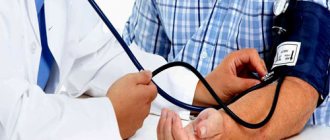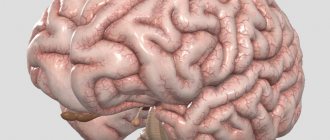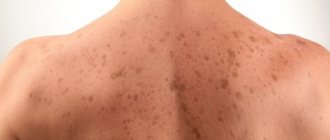A bruise is a closed injury to soft tissue. There is probably not a single person who has not experienced this type of injury. In most cases, bruises do not require treatment and heal on their own. As a rule, with a bruise, there is no violation of the integrity of the tissue, except for the rupture of small vessels (capillaries). But sometimes a bruise can cause significant damage, such as a head injury. In addition, the bruise may accompany other wounds, such as a fracture. In this case, they talk about bruised wounds.
A bruise is...
A bruise is a closed injury resulting from mechanical impact. Damage can spread to soft tissues, internal organs, joints and bones. It is widely believed that a bruise is a minor injury that does not require complex treatment. This is a big misconception. In modern medicine, there is a classification of injuries in this category. Sometimes a bruise can pose a significant danger to the life and health of the patient. The danger of injuries in this category lies in the fact that a non-specialist can sometimes confuse them with more serious injuries, such as a dislocation or fracture. What are the symptoms and signs of a bruise? Before answering this question, let’s try to figure out in what incidents such an injury can occur. In everyday life, bruises most often occur from falls, collisions with hard objects, and fights. Damage in this category can also occur in the event of serious transport and industrial accidents.
Signs of a bone fracture
The term bone fracture refers to a complete or partial disruption of the anatomical integrity of the bone, which occurs as a result of the impact of a force on a section of the skeleton that exceeds its strength.
Based on their occurrence, fractures are divided into two large groups:
Caused by traumatic (mechanical) impact
It occurs as a result of a pathological process in which even a slight mechanical impact provokes a fracture: tuberculosis, tumor and metastatic formations in the bone, etc.
For skin disorders:
- open: with skin damage;
- closed: no damage to the skin.
By severity of damage:
- complete: with and without displacement of bone fragments;
- incomplete: cracks, breaks.
Diagnostics
The diagnosis is established by a doctor using absolute and relative signs and then confirmed by x-ray methods.
Relative criteria (characteristic of many traumatic injuries and are indicative):
- pain at rest, increasing with active movements or stress;
- swelling (edema) localized at the site of injury;
- bruising at the site of injury: may pulsate, indicating ongoing bleeding from the ruptured vessel;
- restriction or impossibility of movement in the injured limb: for example, when the collarbone is fractured, a person’s arm hangs down, leaving minor movements in the elbow joint.
Absolute criteria (indicate the presence of a fracture and allow one to distinguish it from other types of injuries):
- limb deformity;
- uncharacteristic (pathological) mobility: movement of a limb in an uncharacteristic place (where there are no joints);
- crunching or crepitation, which can be heard at a distance (more clearly when pressing with a stethoscope in the projection of the injured area) or felt tactilely;
- bone fragments are visible in the wound or rise along with the skin (with an open or closed fracture, respectively).
Danger
Fractures can be complicated or uncomplicated.
- traumatic shock;
- fat embolism (fat entering the bloodstream from the inside of the bone);
- damage to internal organs;
- bleeding;
- the addition of a bacterial infection with subsequent inflammation of the bone marrow and even the development of sepsis.
First aid
Helping the victim before transporting him to a medical facility involves the following steps. It is necessary to try to assess the condition of the victim and recognize the location of the injury.
If bleeding is detected, you should immediately stop it by applying a tourniquet above the site of injury (on the legs, the tourniquet is never applied to the lower leg, and on the arms - to the forearm, but only to the thigh and shoulder).
The limb is immobilized (immobilized) by applying a splint that captures the joints above and below the injured limb. To do this, you can use any durable improvised object that will immobilize the limb. If necessary, the patient is taken to a medical facility.
Symptoms and signs of bruise
The main sign of any bruise is pain in the affected area. Depending on the degree of damage, swelling may also be observed, and sometimes hematomas may appear. Often, with bruises, the function of a limb or organ is impaired. For minor injuries, this symptom may disappear without a trace after a few hours. If the damage is serious enough, medical attention and specific therapy are required according to the patient’s individual indications. Sometimes the first signs of a bruise are not only pain and swelling, but also superficial damage to the skin. Abrasions and scratches can occur from falls on uneven, rough surfaces.
Classification of bruises
In official medicine, an injury such as a bruise has four degrees of severity. The first category is the most insignificant. This includes injuries characterized by mild painful sensations. Swelling and hematomas are not observed with such injuries. Usually after 1-2 days the victim completely forgets about the unpleasant incident, without any special treatment.
Others have signs of second degree contusion. Damage in this category is characterized by pronounced pain for at least the first 24 hours. The affected area swells, bruises or abrasions may appear.
With a third-degree contusion, the muscles and tendons are damaged. The injury is accompanied by swelling, bruising and acute pain. Such damage requires serious treatment, and sometimes quite long rehabilitation.
A fourth-degree bruise is a very serious injury that requires urgent hospitalization. These injuries are diagnosed in falls from great heights and accidents. Most often, not only soft tissues are damaged, but also internal organs and bones.
What parts of the body are bruised?
When hearing the word “bruise,” most people remember their own childhood and their knees that were always scraped during active games. In fact, it’s not just the limbs that can be bruised. Injuries of this type are also typical for the head, back, tailbone, chest, abdominal cavity, brain and internal organs. And yet, the hands most often suffer: bruises of the fingers, hand, elbow, shoulder, and forearm are common. Injuries to the lower extremities – foot, leg, hip, knee – often occur. How can you prevent such damage? The most important thing is to take your time and try to do everything as carefully as possible. Follow basic safety rules at home and at work. Wear comfortable shoes and remember to watch your step.
Bruised or dislocated joint?
A bruise is often confused with an injury such as a dislocation. Indeed, the symptoms of both injuries are quite similar. A dislocation is a joint injury characterized by disruption of the articular surfaces of the bones and sometimes a change in their natural position relative to each other. There are some common signs of a bruise, fracture and dislocation. This is, first of all, severe pain in the affected joint upon injury and immediately after it. When a dislocation occurs, the function of the affected limb is impaired. In this case, just like with a regular bruise, swelling, swelling and redness are observed. How can a non-specialist recognize a dislocation in a timely manner? With this injury, you can notice external deformation of the joint, as well as shortening of the affected limb, sometimes it takes an unnatural position.
Fracture and bruise: common symptoms and differences
A fracture is another injury that can result from a strong blow or fall.
This injury is characterized by a violation of the integrity of the bone. With such an injury, the pain is very severe, and the swelling in the area of injury is significant. And yet the signs of bruise, fracture and dislocation are similar. With all these injuries, subcutaneous hemorrhage and bruising are observed. A fracture requires treatment under the supervision of specialists, and in some cases, the patient’s stay in the hospital. How to distinguish this injury from a dislocation or bruise? The easiest way to visually determine a limb fracture. An arm or leg looks unnatural and may bend in places where there are no joints. When you press in the area of the fracture, bone fragments can be felt, and their crunching can also be heard. Attention! If such symptoms are detected, the victim must be urgently taken to the hospital or call an ambulance.
Video
We offer you to watch a video on the topic of the article.
Education: Rostov State Medical University, specialty “General Medicine”.
Found an error in the text? Select it and press Ctrl + Enter.
The human brain weighs about 2% of the total body weight, but it consumes about 20% of the oxygen entering the blood. This fact makes the human brain extremely susceptible to damage caused by a lack of oxygen.
More than $500 million a year is spent on allergy medications in the United States alone. Do you still believe that a way to finally defeat allergies will be found?
Many drugs were initially marketed as medicines. Heroin, for example, was originally brought to market as a cure for children's coughs. And cocaine was recommended by doctors as an anesthesia and as a means of increasing endurance.
Smiling just twice a day can lower your blood pressure and reduce the risk of heart attacks and strokes.
When lovers kiss, each of them loses 6.4 calories per minute, but at the same time they exchange almost 300 types of different bacteria.
Besides people, only one living creature on planet Earth suffers from prostatitis - dogs. These are truly our most faithful friends.
The cough medicine “Terpinkod” is one of the top sellers, not at all because of its medicinal properties.
Each person has not only unique fingerprints, but also tongue prints.
Research shows that women who drink several glasses of beer or wine per week have an increased risk of developing breast cancer.
In an effort to get the patient out, doctors often go too far. For example, a certain Charles Jensen in the period from 1954 to 1994. survived more than 900 operations to remove tumors.
An educated person is less susceptible to brain diseases. Intellectual activity promotes the formation of additional tissue that compensates for the disease.
Four pieces of dark chocolate contain about two hundred calories. So if you don’t want to gain weight, it’s better not to eat more than two slices a day.
American scientists conducted experiments on mice and came to the conclusion that watermelon juice prevents the development of vascular atherosclerosis. One group of mice drank plain water, and the second group drank watermelon juice. As a result, the vessels of the second group were free of cholesterol plaques.
Tooth decay is the most common infectious disease in the world, which even the flu cannot compete with.
There are very interesting medical syndromes, for example, compulsive swallowing of objects. One patient suffering from this mania had 2,500 foreign objects in her stomach.
Each of us has heard stories about people who never brushed their teeth and had no problems doing so. So, most likely, these people either did not know about their presence.
However, despite this, soft tissue bruises require serious attention, which is explained by the possibility of complications. In addition, the diagnosis of a bruise is not obvious in all cases: more severe organ damage may be hidden under this mask.
Causes of bruises
A bruise occurs when the body is hit with a blunt object or as a result of a fall. The severity of the injury is determined by several factors:
1.characteristics of the traumatic agent:
2. features of injured tissues:
the extent of the damage area;
degree of blood supply to the organ;
proximity to other organs (large vessels, bone, nerve, etc.).
Symptoms of bruise
Manifestations of a bruise are characterized by pain of varying intensity, swelling, bruising and often hematoma - a local accumulation of blood. The severity of edema is greatest in places with loose subcutaneous tissue - on the face, in the joint area, on the back of the hand. The pain persists for 3 or more days - this depends on the extent and depth of the damage, as well as on the involvement of a nearby organ, such as a joint, in the process.
Microscopically, with a bruise, damage to the skin, subcutaneous fat, muscles, and small vessels is determined. Violation of the integrity of blood vessels leads to interstitial bleeding, which, along with reactive edema, further compresses the tissue and can increase their damage.
How to distinguish a bruise from a fracture, dislocation, sprain or rupture of ligaments?
Contusion of soft tissues can lead to limitation of movement, especially if we are talking about injury to the limbs. It is not always possible to easily distinguish a bruise from a more serious injury, but there are a number of characteristic signs.
1. With a bruise, pathological joint mobility never develops, when, for example, the knee or elbow joint can be excessively extended.
2. The shape of the joint does not change significantly, but swelling may occur, visually increasing its volume.
3. A bruise never leads to a change in the shape of the bone: there should be no unnatural bends of long bones.
First aid for minor bruises
What to do if there is a bruise? This is a fairly common injury, for which everyone should be able to provide first aid. The first step is to apply a cool compress to the affected area. This can be an ice pack or a cloth soaked in cold water. Cooling treatments slow down tissue reactions and help reduce pain. It is important to prevent hypothermia. If you use ice, apply it for no more than 10 minutes. When providing first aid, it is important to understand what the signs of a bruise are in this particular case. By assessing the symptoms, you can understand whether medical attention is required. If the injury is accompanied by superficial skin lesions, they should be treated with an antiseptic and then a bandage applied.
General rules for first aid
Due to the bruise, active substances begin to be released in the damaged tissues, which provoke pain, swelling, and an acute inflammatory process. Cold slows down this process, so a cold compress is indicated for injury. Also, when cooling, the capillaries begin to shrink and hemorrhages are observed several times less.
An ice pack is most often used. If there is none, then you can use any product from the freezer, which is pre-wrapped in a towel. Thanks to this, tissue frostbite can be avoided. Apply ice to the sore area for 30-40 minutes. Then take a break for a third of an hour. Cooling procedures should be carried out for 4-5 hours, thereby avoiding swelling and an acute inflammatory process.
It is possible to use cooling lotions. In this case, there are no special precautions. You just need to be patient to regularly replace the napkin with a new one within a few hours.
Providing first aid for soft tissue bruises involves the use of drugs such as:
- Nurofen;
- Ketonal;
- Ketorol;
- Pentalgin;
- Indomethacin and other drugs.
The analgesic effect of these drugs is due to the fact that they suppress the production of bioactive substances that occur in the body when damaged.
In the first few days, take the listed medications constantly, and not only when the pain intensifies. A day after the injury occurs, it is time for heat therapy. Excellent results are obtained by rubbing with warming balms and ointments. Troxevasin ointment has a good effect.
Warming compresses
When considering how to provide first aid for a bruise, it is important to know how to properly apply warm compresses. In order to apply the applique, you will need a mixture of vodka, 5% -0 vinegar and water. Take 1 large spoon of each ingredient. Take a napkin made of 6-7 layers of gauze, a sheet of compression paper and a sufficient amount of cotton wool. If you don’t have compression paper at home, you can use a disposable packaging bag or thin polymer film instead.
Soak rolled up gauze in the mixture, squeeze lightly and wrap around the injured area. Compression paper is placed on top of the napkin. It needs to be crushed a little before use. This way it fits better to the body. The final stage - the compress is wrapped in a layer of cotton wool 1 cm thick.
It is very important to pay attention to the relationship between the edges of the layers that make up the compress. The edges of the paper must overlap the napkins, and the layers of cotton wool must overlap the paper. A not very tight gauze suspension is placed on top of such an application. This compress is left on all night.
Serious injury: signs and first aid
When an injury is accompanied by severe pain and extensive swelling, it is necessary first of all to provide the victim with rest. The algorithm for providing first aid is the same as for minor damage. Common signs of a bruise, fracture and dislocation are pain, swelling and bruising. To improve the well-being of the victim and stop subcutaneous hemorrhage, a cold compress is used. If possible, apply a tight bandage to the injured area. In case of severe pain, it is permissible to take any general anesthetic orally. If the injury is serious, for example, there are signs of a brain contusion, you should immediately call an ambulance. Remember: if you want to help the victim, the main thing is not to harm. For any bruises, thermal effects on the injured area are unacceptable. It is also strictly forbidden to massage or rub the affected area. In the first days after injury, such procedures can only worsen the patient’s condition.
General recommendations for filling a first aid kit
In order for first aid for a severe bruise to be effective, you need to have several effective medical devices and tools on hand. The first step is to quickly get rid of swelling and normalize the flow of blood and lymph. For this purpose, there are compression elastic bandages that do not cause skin irritation. Manufacturers produce products with a cooling effect. This option is much safer than applying ice, since it does not cause frostbite to the tissue and at the same time provides cooling of the bruised area for 2 hours.
In addition to an elastic bandage, it is advisable to have in your first aid kit:
- antiseptic liquid or spray;
- hemostatic agent;
- ointments for bruises and sprains;
- atraumatic ointment dressings;
- sterile gauze or self-adhesive dressings;
- self-fixing bandage.
This list is especially relevant for families with children, since children are often injured. Proper use of special tools will reduce pain and speed up recovery. If the bruise is accompanied by a serious hematoma, deep wound and dangerous injuries, you should immediately consult a doctor. You can handle minor abrasions and bruises on your own.
How are bruises treated?
When diagnosing a bruise, it is important to determine its extent, the nature of the damage, and also to exclude the possibility of more serious injuries. Only a doctor can make an accurate diagnosis. The signs of a bruise, fracture and dislocation are similar. In case of serious injuries, additional studies are carried out to exclude the possibility of injury to joints and bones. Most often, for bruises, special ointments and rubs are prescribed to speed up the healing process and relieve pain. These are products such as “Fastum Gel”, “Bystrum Gel”, “Finalgon”, “Espola” and their analogues. When using ointments of these categories, follow the manufacturers' recommendations. The patient may be prescribed thermal procedures 2-3 days after injury. For serious bruises, hospitalization is prescribed; in some cases, surgical treatment may be indicated.
Folk remedies
For minor bruises, home treatment can be carried out using traditional recipes. To prepare a healing lotion, mix lemon juice and honey in equal proportions. You need to moisten a cotton-gauze swab in the resulting mixture and apply it to the site of the bruise. This lotion is done up to three times a day. Cabbage is believed to have healing properties. Salads made from this vegetable should be eaten in case of serious injuries or damage. For wounds and bruises, a cabbage leaf is pierced in several places and then applied to the affected area. A regular bandage is made on top.
Common signs of a bruise are swelling and hematomas. Regular beans can help cope with them. Boil it and grind it, and then apply the pulp to the sore spot. Any product containing menthol can help cope with the pain of a bruise. To alleviate the condition of the victim, it is allowed to apply toothpaste or shaving gel to minor injuries. Be careful when using this folk recipe and any pharmaceutical ointments. If applied too abundantly and frequently, this composition can damage the skin and cause irritation.
Treatment
If the injury occurs in the area of the head, lower back, abdomen or chest, the patient must be urgently hospitalized in the surgical department. After all diagnostic measures have been carried out, specialists will decide on the further method of treatment. In case of surgery, it will be necessary to sew up torn tissues or organs and remove blood clots.
If the patient has been examined and no serious injuries have been identified, then he is prescribed painkillers, cold compresses and a gentle regimen for the injured organ.
The following medications can be used to treat bruises:
- Anti-inflammatory drugs, for external use:
- Balm Dikul,
- Deep Relief,
- Indovazin.
- Ointments and creams against hematomas:
- Rescuer,
- Lyoton 1000,
- Troxevasin.
- Vasodilator ointments:
- Apisatron,
- Capsicam.
For minor injuries, bruises can be treated independently using several of the following recipes:
- Lotions prepared from a decoction of St. John's wort, plantain, and wormwood should be applied to the site of the bruise.
- Tea leaves can be used to treat injuries.
- To relieve pain from bruises, you can do a light massage using essential oils of fir, lemon or geranium.
- Balsam “Zvezdochka” copes well with these injuries.
- An effective remedy for resolving swelling is bodyaga. The powder is diluted with water to a paste and placed on the damaged area, wrapped in a warm scarf.
- You can grate the potatoes and put the resulting mass on the injury site for several hours.
Using such recipes, you can get rid of swelling and hematomas in a short time, because a bruise is, first of all, damage to the skin and the layer under the skin.
Treatment of bruises at the regeneration stage consists of the use of physiotherapy, which helps in the rapid restoration of damaged tissues.










